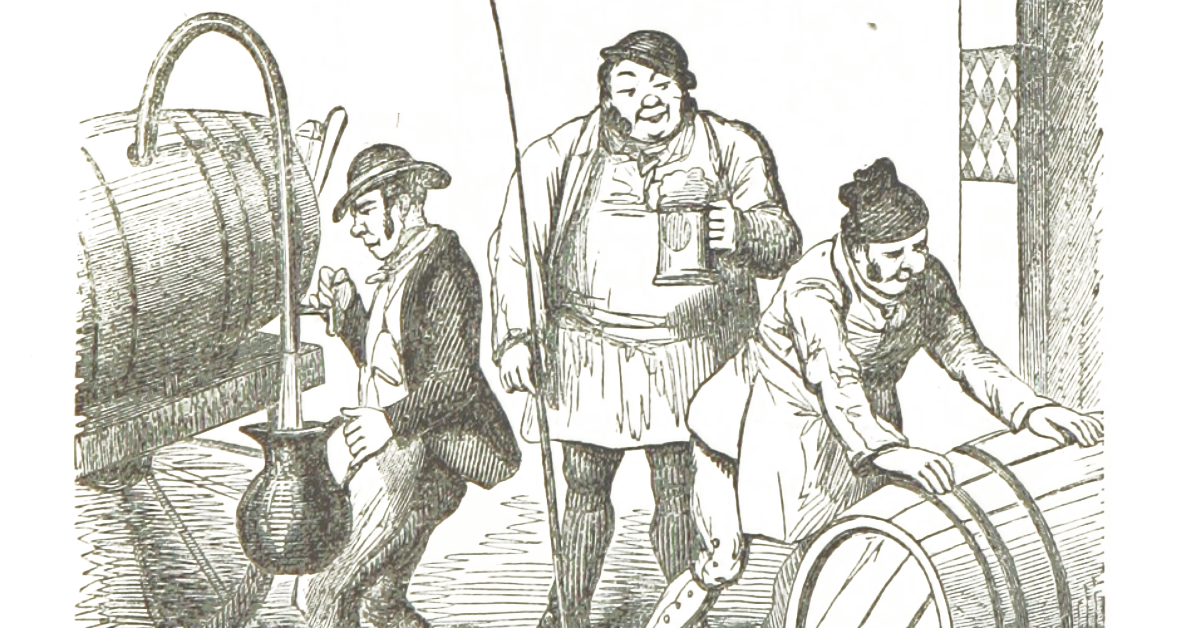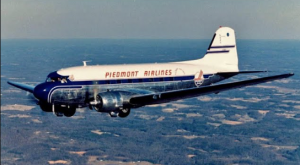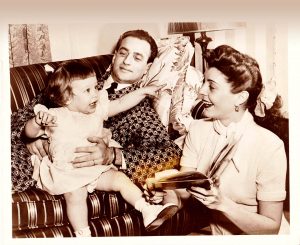
Will to Drink
by David Bailey
Will Porter, I’m convinced, would love this magazine, and not only for its superb poetry and fiction and the inside scoop on his native Greensboro. No, I can think of three other topics that would interest him – our incisive coverage of wine, spirits and beer. O.Henry loved all three to access and lead what come to be known as a drinking life – just as his father did and grandfather before him. The stories about his taste in, and capacity for, all things alcoholic are legion and have been well-documented in David Stewart poignant O.Henry: A Biography of William Sydney Porter. In fact, Stewart’s primary theme is how the short-story master created a “surrogate character, the author known as O.Henry…so that William Sydney Porter could live in the shadows of New York and slowly drink himself to death.”
Yes, it’s a grim storyline, and Stuart relentlessly draws it out, but I don’t think I’ve ever read about anyone who had as much fun as O.Henry did as he pickled his liver. Stuart, however, doesn’t answer a basic question I keep asking. Would today’s drinkers recognize the brews he quaffed? As I read the book I kept asking myself, “What would O.Henry drink?”
O.Henry’s “love of liquor,” Stuart says, began in Texas, where the 20-year-old Porter signed on as a ranch hand down by the Rio Grande, hoping fresh air and hard work would improve his health. What it did for sure was give him a powerful thirst, which he would periodically quench in Cotulla, where he and the other cowboys “stopped at the saloon for a little liquid refreshment.” Lager, rather than ale, would most likely have been on tap as Germans had been immigrating to Texas—and setting up breweries—since the 1840s. But there’s an even bigger reason why they would have been drinking lager in the 1880s. It had been officially judged nonintoxicating.
Porter, born in 1862, was 3 when the Civil War ended. Along with a maelstrom of other social changes, the end of the Civil War brought about a radical change in what Americans drank: “Lager beer replaced whiskey as the national beverage of the working man,” says Iain Gately, in Drink: A Cultural History of Alcohol. The primary reason was that the Union commanders, staging much of the war from the wharves and railheads of St. Louis, “banned intoxicants from camp and field, leaving lager — officially nonintoxicating — as the troops’ choice of drink,” writes Maureen Ogle in Ambitious Brew: The Story of American Beer. Whoa, there! Did she say “nonintoxicating”? Yes, as she explains earlier in the book, lawyers—in a number of precedent-setting court cases brought against saloons that served German-style lager on Sundays — had produced a parade of expert witnesses who testified, among other things, “that, when consumed in moderate quantities, lager could not and did not intoxicate.” One expert testified “he had watched men imbibe as many as sixty glasses of lager without any evidence of intoxication.”
So the troops came home from the war loving lager, while the more potent English ale came increasingly to be considered “a rank broth with the taste and texture of muddy water,” according to Ogle.
In 1884, Porter gave up ranching, moved to Austin and returned to what he’d done in Greensboro, clerking in a drugstore. Hating the work, he spent his evenings carousing with other bachelors and his weekends sharing kegs of beer with his buddies on fishing trips.
After courting some of Austin’s fairest beauties, Porter, at 25, eloped with Athol Estes. The next two years were “undoubtedly the two happiest years of Will Porter’s life,” says Stuart, but the birth of their daughter, Margaret, was followed by the mother’s collapse and a diagnosis of tuberculosis, a disease that ultimately took her life. Though Porter doted on his daughter and was, according to Stuart, a good husband, “sometimes Will came home in a highly liquefied condition.” After going to work for the First National Bank of Austin, “Will Porter continued to enjoy the companionship of his old friends of bachelorhood and liked to stop off at a saloon.” When he came staggering home, “sometimes [Athol] lay on the floor and screamed at him,” Stuart continues.
As humiliating as that might have been, it did not stop Porter’s drinking, which slowly became intertwined with his budding career as a writer: “You can’t write a story that’s got life in it by sitting at a work table and thinking,” O.Henry told a New York Times reporter. “You got to get out in the streets, into the crowds, talk with people, and feel the rush and throb of real life.” It was an argument O.Henry used throughout his career to justify his heavy drinking. “How much of it all was for pure research, and how much for entertainment of a lonely writer was another of the questions that O.Henry never answered,” Stuart concludes.
Before serving three years for embezzling funds from the bank, Porter jumped bail and fled to New Orleans, where he discovered a new love — the Sazerac cocktail, which competed for his affections with the mint julep. The Sazerac, made with rye whiskey or cognac, is amped up with absinthe. Even France made absinthe illegal because of its narcotic effects. Add sugar, a lemon peel and some orange bitter, and you’re ready to dance with the green fairy, as some have described the experience.
Years later in New York City, O.Henry would enjoy “long liquid lunches of the publishing trade,” Stuart says, where he’d “order Sazerac cocktails before a meal and was known to consume a number of them.” Fish and white wine followed, then red wine with the meat, “and perhaps some champagne with dessert and fruit, and then a brandy or two.” And that was lunch, mind you.
Evenings often consisted of “O.Henry’s favorite pursuits, which were drinking, dining and observing the people of the city, especially young women.” In some of New York’s sleaziest saloons, where Stuart says the profits came more from larceny than lager, beer would have been the beverage of choice. But for our high-living author, not just any beer would do. O.Henry favored Pilsner, a Bohemian lager that had originated in the town of Budweis in the Puls region of Bohemia and had stolen the show at the 1873 Vienna Exposition.
Determined to come up with an American version, Busch and others had worked to produce a beer as light, as bright and as sparkling as the Bohemian Pilsner. But beer made with American protein-rich, “six-row” barley proved heavy and thick—until corn and/or rice were added. For instance, Busch’s brew master added eight pounds of rice to his mash for every five bushels of barley. Using Saaz hops, Bohemian yeast, beechwood strips in the aging, Budweiser was born, sparkling and light. The King of Beers (rather than the Beer of Kings) originally sold at a premium, just the sort of beer that a big spender like O.Henry would have gone for.
Asked by a reporter once whether he was Bohemian by “nature or extraction,” obviously referring to the author’s Bohemian lifestyle, O.Henry quipped, “By extraction. Never like to drain kegs. Prefer the bottles.” O.Henry was letting the reporter know that keg beer that could be had for five cents a mug was below his notice. “Writing is my business,” he once said, explaining it’s the only way he could afford Pilsner. Although it might seem to the modern reader that O.Henry was using Pilsner as a synonym for beer, he was really referring to the price of the Bohemian brew—about a dollar a bottle then or $17 in today’s dough.
That’s not to say he didn’t like his whiskey: A friend noted after O.Henry’s death that “O.Henry drank and drank hard. He was a two-bottle man.” Stuart writes that one bartender could always tell “when O.Henry was going back to his digs for a long session of writing, because the writer asked that a bottle of Scotch be sent to the room.”
But his muse eventually became his nemesis. By 1906, at the age of 44, O.Henry “found himself too often unable to concentrate long enough to turn out a story,” Stuart says. Although he promised to change his ways after marrying Sara Lindsay Coleman and even spent some time drying out at the Battery Park Hotel in Asheville, he backslid. After months of trying to reform her husband, Sara observed, “No one could manage that man. He was a law unto himself and had a deep dislike for anything that resembled nagging or fussing.” Once his wife moved back to North Carolina in 1909 to live with her mother, O.Henry returned to his old haunts. “He had to be in the streets…dancing with the bar girls in the tourist traps and boozing with the hoi polloi in the saloons,” Stuart says. “This was his chosen life.”
Of course O.Henry knew where this life would lead. Only months before his death on June 3, 1910, at the age of 47, his doctor found his heart enlarged, his kidneys shot and his liver in a sad state. The doctor asked what on earth he had been doing. “I know I smoke too much, keep late hours, and drink too much,” O.Henry admitted. Then, unable to resist one of his classic twists, he added, “but that’s about all.”
This story first appeared in O.Henry magazine in August 2012. David Bailey’s first “real” beer was in a pub in Oxford, England, while hitchhiking across Europe. The beer was warm and bitter. “I’ve never looked back,” he says.




